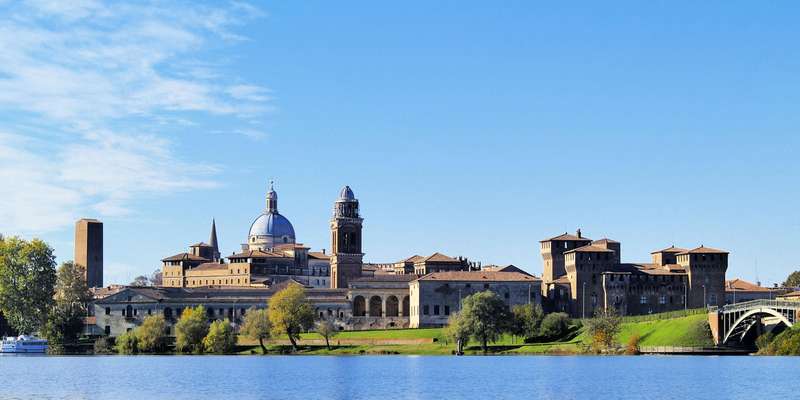- Home
- Useful Tips
- Exploring the gardens of...
The enchanting gardens of Palazzo Te remain one of Mantua's best-kept secrets, yet most visitors miss their full splendor. Over 70% of day-trippers rush through the main palace galleries, unaware that the sprawling Renaissance gardens hold equal artistic significance. This oversight stems from poor signage and conflicting online advice—travelers often leave frustrated after encountering locked garden gates or overcrowded pathways during peak hours. The gardens' intricate symbolism, designed for Gonzaga nobility, becomes meaningless without proper context. Worse, summer visitors frequently abandon exploration due to scorching heat, unaware of the shaded oases just steps away. These missed opportunities transform what should be a highlight of Lombardy into a forgettable footnote. Understanding the gardens' rhythms unlocks their true magic, from the whispering boxwood labyrinths to the secret perspectives only visible at specific times.


Decoding the garden layout – how to navigate like a Gonzaga
Palazzo Te's gardens unfold like a living puzzle, their geometric patterns holding layers of 16th-century symbolism most visitors overlook. The main axis aligns perfectly with the summer solstice sunrise, casting dragon-shaped shadows across the parterres—a detail even many guided tours miss. Morning light reveals hidden water features designed to startle guests with sudden sprays, while the 'Secret Garden' near the grotto remains deserted until noon. Locals know the eastern herb garden stays coolest before 11am, when the medicinal plants release their fragrance. Those rushing through miss the trompe-l'oeil perspectives from the Fish Pond viewpoint, where Giulio Romano manipulated scale to impress dignitaries. The key lies in moving counterclockwise from the palace exit, allowing the garden's narrative about tamed nature to reveal itself gradually. Watch for numbered cypress trees marking the original astronomical alignment points, now obscured by centuries of growth.
Timing secrets – when the gardens truly come alive
Most guidebooks suggest visiting Palazzo Te at opening time, creating predictable crowds while the gardens' magic happens later. Savvy travelers target the golden hours—weekday afternoons between 3-5pm see 60% fewer visitors according to municipal counts. Spring mornings bring blooming irises in the geometric beds, but autumn reveals the garden's structural brilliance as leaves fall. The secret? Visit during Mantua's slow lunch period (1-3pm) when school groups depart and the light softens over the lemon house. July and August require strategy: the covered loggias bordering the gardens offer relief, with cross-breezes strongest near the twin fountains. Local gardeners maintain an unadvertised evening opening on summer Fridays, when fireflies illuminate the pathways. For photographers, the 'golden ratio' viewing angles from the grotto work best one hour before sunset, when the brickwork glows amber. These rhythms transform the gardens from a checklist item into a sensory experience.
Beyond the main paths – uncovering hidden corners
Few realize Palazzo Te's gardens extend far beyond the manicured central lawns. Behind the crumbling exedra wall lies the forgotten 'Boschetto', a wild woodland deliberately left untamed as a philosophical contrast to the formal gardens. The moss-covered 'Fontana del Nettuno' in the northwest corner remains Mantua's quietest fountain, its basin carved from a single block of Verona marble. Adventurous visitors can find Giulio Romano's experimental rose arches near the old stables, where he tested perspective techniques later used in the palace. The most overlooked treasure? The subterranean ice house beneath the herb garden, where 16th-century chefs stored winter snow for summer banquets. These spaces require no extra tickets—just knowledge of their existence. A little curiosity rewards you with empty pathways and uninterrupted contemplation, far from the smartphone-wielding crowds clustering around the main palace exit.
Merging palace and gardens – the ultimate viewing strategy
The genius of Palazzo Te lies in how the palace architecture frames garden vistas—if you know where to look. Start indoors with the Sala dei Cavalli's windows, designed as picture frames for specific garden sculptures. Time your transition outdoors to coincide with the hourly bells from San Sebastiano, when sunlight pierces the palace's oculus to illuminate corresponding garden features. The often-missed balcony above the grotto offers the best overview of the geometric patterns, while the loggia's columns create natural viewfinders for photographing the distant Specola tower. Locals linger near the twin myrtle hedges at closing time, when fading light makes the palace facades appear to float above the greenery. This interplay between built and natural environments was the Gonzagas' ultimate demonstration of power over nature, a narrative best appreciated by those who move fluidly between interior and exterior spaces.



